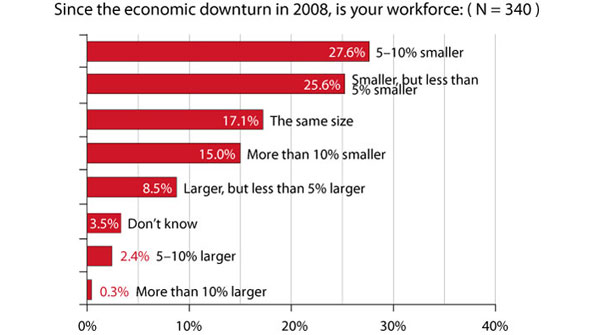Managing staff during a downturn
In 2007, at the onset of the Great Recession, Sarasota County, Fla., was like a lot of local governments — in trouble. The collapsing economy led to budget cuts, a hiring freeze and mandated reductions in the size of the county workforce.
County managers decided they could not just tinker at the margins, but instead they had to make major changes in their workforce. “We really didn’t have a choice,” says Joanie Whitley, Sarasota’s interim director of human resources and a 14-year veteran with the county government.
Sarasota’s challenges mirrored those of virtually every local government facing the greatest economic downturn since the Depression. Across the country, governments have retrenched, reorganized and cut back. Since September 2008, according to federal government records, cities and counties have chopped 535,000 positions, the greatest reduction on record.
In Sarasota County, officials began a comprehensive reorganization of the workforce. The process was sometimes painful, Whitley says, including laying off about 170 employees. But the changes helped stabilize county operations, she says, and improve employees’ chances for advancement and development.
Sarasota County’s efforts caught the attention of the Washington-based Center for State & Local Government Excellence. The center cited Sarasota County’s reorganization as a case study in “innovating human resource practices.”
Those practices included shrinking the workforce by reducing the number of job classifications from 370 to less than 90. Officials regrouped employees into broad “career tracks,” with fewer job titles but specific steps for advancement in each category.
The reorganization gave managers greater flexibility to place people where they are needed most. For employees, Whitley says, it provided a clearer “roadmap” to success.
Getting employees involved was key. In forming the IT career track, for example, she says, “We met with every single employee. It helped employees understand why we were doing this and how it affected them.”
Other changes include tightening county hiring practices. Before any hire, managers ask, “Is this something we really need?” Whitley says.
The county offered managers alternative sources for recruitment and hiring. That includes temporary workers, contractors and interns.
Sarasota still faces an uncertain future. Unemployment is high, and budgets are tight. All the changes the county has experienced, Whitley says, have taught officials an important lesson. “Don’t take anything for granted.”




















